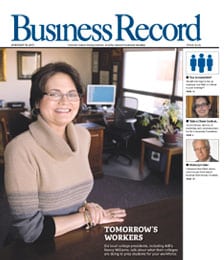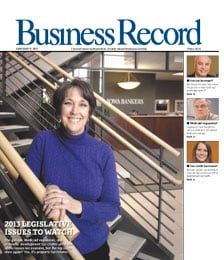A place where all the pieces fit
.floatimg-left-hort { float:left; } .floatimg-left-caption-hort { float:left; margin-bottom:10px; width:300px; margin-right:10px; clear:left;} .floatimg-left-vert { float:left; margin-top:10px; margin-right:15px; width:200px;} .floatimg-left-caption-vert { float:left; margin-right:10px; margin-bottom:10px; font-size: 12px; width:200px;} .floatimg-right-hort { float:right; margin-top:10px; margin-left:10px; margin-bottom:10px; width: 300px;} .floatimg-right-caption-hort { float:left; margin-right:10px; margin-bottom:10px; width: 300px; font-size: 12px; } .floatimg-right-vert { float:right; margin-top:10px; margin-left:10px; margin-bottom:10px; width: 200px;} .floatimg-right-caption-vert { float:left; margin-right:10px; margin-bottom:10px; width: 200px; font-size: 12px; } .floatimgright-sidebar { float:right; margin-top:10px; margin-left:10px; margin-bottom:10px; width: 200px; border-top-style: double; border-top-color: black; border-bottom-style: double; border-bottom-color: black;} .floatimgright-sidebar p { line-height: 115%; text-indent: 10px; } .floatimgright-sidebar h4 { font-variant:small-caps; } .pullquote { float:right; margin-top:10px; margin-left:10px; margin-bottom:10px; width: 150px; background: url(http://www.dmbusinessdaily.com/DAILY/editorial/extras/closequote.gif) no-repeat bottom right !important ; line-height: 150%; font-size: 125%; border-top: 1px solid; border-bottom: 1px solid;} .floatvidleft { float:left; margin-bottom:10px; width:325px; margin-right:10px; clear:left;} .floatvidright { float:right; margin-bottom:10px; width:325px; margin-right:10px; clear:left;}
In the next few months, John Oatts faces the task of persuading 1,000 plumbers and steamfitters to give up more of their pay to educate the men and women who will one day replace them on the job.
Oatts is the training director of the Plumbers & Steamfitters Local Union 33 apprenticeship program. His concern is that the tough economy might mean a hard sell.
As it is, the union members, called journeymen, already give up about 2 percent of their hourly pay to fund the apprenticeship program’s $800,000 annual budget.
“They know what we need to get done,” said Oatts, a 30-year member of the local who has spent the last nine years teaching the trade and the last month directing the program.
Good times?
In some respects, times are good for the union and the program.
All but about 100 of its members are working and the apprenticeship program’s enrollment has increased by about 8 percent in the past year.
The jump in apprentices indicates that the contractors who employ them see a need for more skilled workers. In this economy, that is good news.
In Elk Point, S.D., where the local also has members, Hyperion Refining LLC has proposed a $10 billion oil refinery – the first refinery to be built in this country in 32 years – that will require 4,500 construction workers and 1,826 full-time workers. Plumbers and steamfitters could be a part of each work force.
That project is promising, but far from a certainty. Though approved by Elk Point voters, the refinery is still going through the permitting process.
Bad news was delivered March 5, when Alliant Energy Corp. and subsidiary Interstate Power and Light Co. announced they had scrapped plans for a $1.3 billion power generation plant in Marshalltown. The project would have generated about 1,000 jobs, with half of those made up of plumbers and steamfitters.
In a news release, Alliant and its partners in the project cited the current economic and financial climate; increasing legislative and regulatory uncertainty regarding limitations on greenhouse gas emissions; and the terms placed on the proposed power plant by regulators.
The Iowa Utilities Board last month trimmed Alliant’s requested return on equity to 10.1 percent from 12.55 percent.
Anticipating the future
Still, Oatts and his apprentices are preparing for the future.
Local 33 paid $250,000 for a tractor-trailer rig that can be taken to job sites and used to certify welders in a variety of processes.
In addition, it is preparing a change in its five-year apprenticeship curriculum to comply with new state licensing requirements that are administered by the Iowa Department of Public Health. In the end, apprentices will be licensed to work in any part of the state, eliminating the need to obtain licenses in particular areas.
Oatts said that change will consume about half of the apprenticeship program’s budget and is the key reason he will have to ask union members to pony up more of their hourly pay.
The change is expensive, but good for workers and consumers.
“The quality of the work is going to be better; it’s going to be better for the consumer, and it requires us to make sure we are always looking forward,” Oatts said. “As the industry changes, we need to change.”
The apprenticeship program has five instructors, most of whom took a pay cut from their jobs in the field in order to teach.
Instructors must receive five years of training and after that must attend an annual summer school for refresher courses.
More than pipes
And the job requires more than teaching people how to fit pipes together. Oatts said many apprentices require remedial training in math and science.
“I knew a guy who used to say, ‘If you can’t get into college, get into the building trades,'” Oatts said. “We get a lot of people who are skilled with their hands but still need remedial courses in math and science.”
In fact, the curriculum has advanced in those areas to the point that at the end of the five-year apprenticeship program, students have earned 52 of the 64 credit hours they would need for an associate’s degree at Des Moines Area Community College. “The only thing we don’t offer is the humanities and English literature,” Oatts said.
One of the program’s instructors is Roy Jones, who graduated in 1970 from the University of Iowa with a degree in finance and limited job prospects due to the Vietnam War.
“At that point, all the places where I could have found a job were laying off people,” he said. “I had to change directions.”
Jones worked for 30 years running job sites and working for contractors. Then he was offered the opportunity to pass on what he had learned about mechanical systems.
“My education actually helps; I can take this to the university level,” he said. “I understand formal education, so I can relay what I experienced in the field, relate it to the field and turn it into a university setting.”
In addition to needing to understand volumes, pressures and weights and the flow of liquids and gases from low to high points in a building, many of the apprentices need first to learn the “difference between a washer and a screwdriver,” Jones said.
Local 33 is encouraging its other instructors to obtain a bachelor’s degree, if they don’t already have one. Oatts, at age 52, is taking classes to complete his degree.
“We didn’t have those requirements in the past, but now everyone wants accountability,” Oatts said. “It’s not just a matter of pulling a plumber out of a ditch and bringing him in here. We’re doing more than teaching people how to fit pipes together.”
Many apprentices enter the program “groping for a future and by the time they are out the door they are married and have a family. For a man who’s in his mid-20s or so, that’s quite a career builder,” he said.
Minimal cost
Apprentices are in the classroom every six weeks for a full 40-hour week. Their cost over five years is $100 for books; all other fees are paid by the union. On average, it costs about $5,000 per person to teach a trade that involves hydronics (the use of water in heating and cooling systems, primarily in commercial and industrial buildings), medical gas systems, heating and venting systems, and commercial refrigeration systems.
In the past, apprentices attended classes on Saturdays only.
“When we have them here, we get more depth and retention,” Oatts said. “They are in a learning environment; that’s why they are here.”
In addition to working with Des Moines Area Community College, the local also has a pilot program with Saydel High School in which juniors and seniors take the math and science courses the apprenticeship program requires, then gain direct placement in the program if there is an opening.
“They get a completion certificate, and that gives contractors a good idea whether they will show up for work and do what they need to do,” Oatts said.
The path to the apprenticeship program goes through contractors who are members of the Mechanical Contractors Association of Iowa Inc.
The contractors determine what their employment needs will be in the future and participate in the interviewing and testing process that determines whether someone will be accepted into the program.
Oatts said the apprenticeship program serves as a model for how labor and management can work together.
“Everyone assumes that you have to be an adversary, but this is a good example of how two parties can work together toward a common goal,” he said. “It wouldn’t be possible to do the things we do without their support.”
Apprentices also got a little political education this year when they went to the Iowa Statehouse to listen to the debate over whether the state should enact a prevailing wage law for projects funded with tax dollars.
The legislation would have established a standard wage rate based on average wages in a particular area. The legislation was defeated by one vote.
Class time is worth it
And for the apprentices, the program can be time well spent.
Local 33 members earn about $30 an hour, the high end of the pay scale for plumbers and steamfitters in the state.
The U.S. Labor Department has determined that they will enter a field that will continue to grow in employment through at least 2016.
However, given the condition of the economy, Oatts is reluctant to make job-growth predictions.
Because of the recession, the program’s hybrid welding program, which takes the welding certification tests into the field for apprentices and journeymen, is on hold.
“The info we’ve received is that the forecast for the next 12 months is fairly favorable, but we could get caught up in the economy if it doesn’t turn around,” Oatts said.
For apprentices, that lesson was delivered by Alliant Energy’s decsion to scrap its utility plant in Marshalltown.









